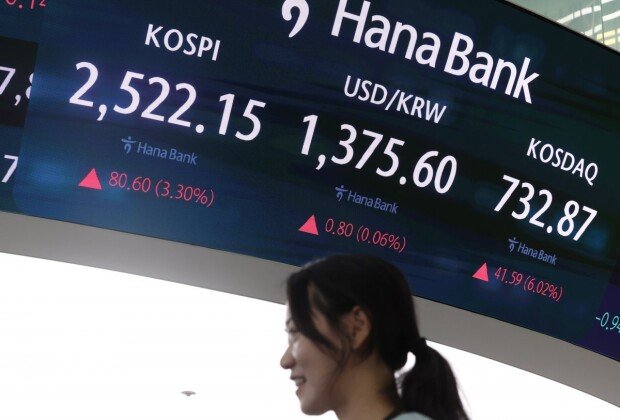
Asian stock markets experienced a dramatic turnaround in sentiment within just one day, as irrational panic selling has abated. Markets that had plunged sharply a day before now surged, with major regional indices posting significant gains. The government is seeking to reassure individual investors amid the “see-saw market” characterized by the consecutive triggering of sidecar trading curbs, emphasizing its capacity to respond effectively to market volatility.
On Tuesday, South Korea’s KOSPI closed at 2,522.15, up 80.60 points, or 3.30%, from the previous trading day. Early in the session, the KOSPI and the KOSDAQ both triggered buying-side sidecar orders due to the steep rise of indices. This marks the first time in over four years and four months that both buying and selling-side circuit breakers were activated in these markets within such a short interval, a phenomenon last seen in March 2020 during the initial shocks of the pandemic. Japan’s benchmark Nikkei 225, which had plummeted by 4,451.28 yen (12.40%) the previous day, also rebounded sharply, gaining 3,217.04 yen (10.2%).
The sharp rebound was driven by a consensus that the previous day’s decline was excessive, attracting bargain hunters back into the market. Positive economic indicators, including the U.S. Services Purchasing Managers’ Index (PMI), released the night before, which met expectations, also contributed to the recovery. However, analysts caution that fears of a U.S. economic recession and risks associated with the unwinding of yen carry trades remain, suggesting that it may take time for the markets to fully stabilize.
In response to the volatility, the South Korean government held a meeting on macroeconomic and financial issues to discuss measures. “If volatility continues to expand excessively, we will promptly implement market stabilization measures,” said Choi Sang-mok, Deputy Prime Minister and Minister of Economy and Finance.













